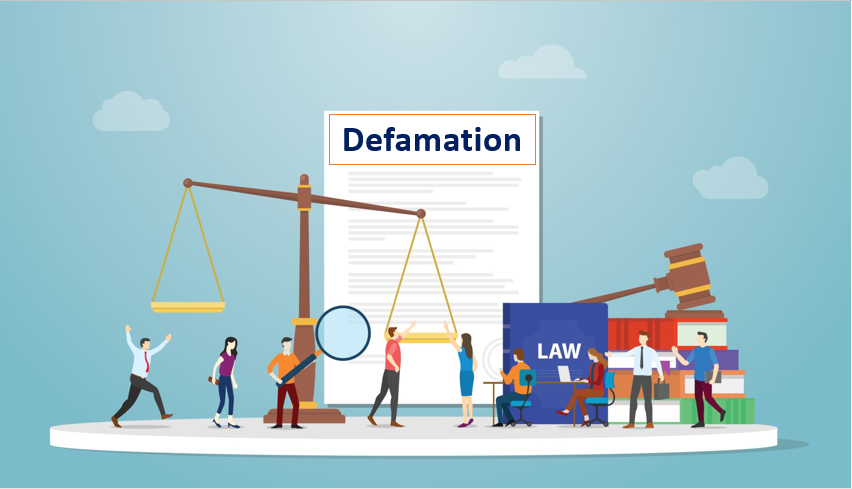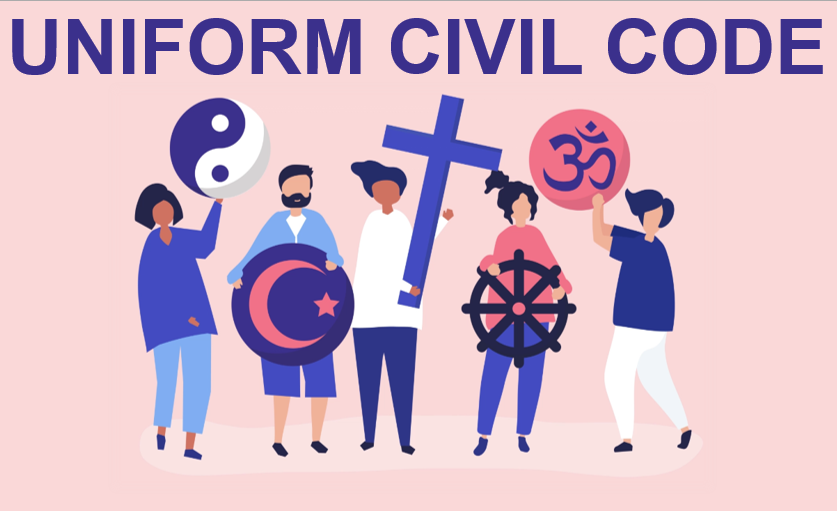Published on 22nd March 2025
Authored By: Mansi Mazumdar
OP Jindal Global University
Introduction
Workplace discrimination stands out as one of the major and most persisting issues which still affects numerous individuals in their professional lives in all parts of the world. This issue, besides affecting employee morale, goes a long way in challenging the integrity and fairness in many businesses. It always comes in many different disguises, especially some biased treatment founded on color, gender, religion, disability, sexual orientation, age, or another foundation all of which evolve around the concept of equity, diversity, and inclusion, and institutional along with legislative reform are already important steps, although the prevalence of workplace discrimination speaks for a tougher legal framework designed to bring an emphasis on the consciousness and have robust enforcement mechanisms.
This paper uncovers the complex legal relationship of workplace discrimination law and the rights of the employee. This paper will shed light on how employees are lawfully protected through landmark cases that shape the working environment in terms of equality from different legislative landscapes around the world. The above discussion also shows global needs with cultural shift to develop an equal workplace based on different legal measures of handling cases about workplace discrimination
Legal Rules on Workplace Discrimination
Across most of the jurisdictions globally, both governments and institutions have attempted to curb and counter this urgent matter of workplace discrimination. They have been doing this through various broad-based legal rules they put in place for specifically developing a friendly and equitable atmosphere towards fair treatment for everyone. Notably, while the legal rules vary considerably between one jurisdiction and another, what these common laws achieve is protecting the dignity, rights, and overall well-being of the employee within any given professional sphere or work setting.
For the country of India, the anti-discrimination laws form part of the constitutional structure. Articles 14, 15, and 16 collectively form an extremely holistic framework which in itself effectively puts a check on any kind of discrimination on a number of bases including but not limited to religion, race, caste, sex, or place of birth while at the same time ensuring the principle of equality before the law for everybody. Apart from these significant articles, there are many other important legislative enactments like the Equal Remuneration Act, 1976, the Maternity Benefit Act, 1961, and the Sexual Harassment of Women at Workplace (Prevention, Prohibition, and Redressal) Act, 2013. All these laws have further strengthened and enhanced the constitutional provisions which were aimed at bringing in fairness and justice within society. The most important aspect that needs to be brought forward is that the Rights of Persons with Disabilities Act, 2016 clearly and decisively mandates the provision of reasonable accommodations at the workplace. The act itself speaks to a great momentum toward inclusion and equal opportunities for persons with disabilities in the workplace. In the United States, issues related to discrimination at work are addressed comprehensively under Title VII of the Civil Rights Act, 1964. This particular piece of legislation explicitly prohibits discrimination on grounds of race, color, religion, sex, or national origin, thus working toward a fair and equitable workplace for everyone.
The rights of the disabled are safeguarded and ensured through the all-encompassing framework of the Americans with Disabilities Act, popularly referred to as the ADA, enacted in 1990. In addition, age discrimination is particularly ensured for workers who are at least 40 years old under the law that is commonly referred to as The Age Discrimination in Employment Act, or ADEA, passed in 1967. Lastly, compensation discrimination due to gender is deemed unlawful through The Equal Pay Act of 1963, which promotes and enforces the basic principle of equal pay for equal work accomplished by any worker. Similarly, the United Kingdom has an entire body of equality legislation that has been crafted specifically to serve as one single, all-inclusive legal framework to deal with and fight various forms of discrimination—the Equality Act, which was passed in the year 2010. This major legislation effectively amalgamates and encompasses all existing anti-discrimination laws into one document, providing legal protections concerning nine distinct protected characteristics. These characteristics include vital aspects such as age, disability, gender reassignment, and sexual orientation, among others. The presence and implementation of such legislation clearly show the United Kingdom’s strong commitment to creating and maintaining an inclusive and equitable working environment for all individuals, regardless of their backgrounds or personal attributes. International conventions like the International Labour Organization’s Convention No. 111 on Discrimination in Employment and Occupation ensure equal treatment at the workplace. Paper frameworks are quite effective unless the same is implemented and executed with robust support and enforcement structures that can affect the desired change.
Employees’ Rights Towards Elimination of Workplace Discrimination
In addition to improving and complementing the laws already in place to curb workplace discrimination, a whole collection of different workers’ rights has been enacted with the direct intention of facilitating fairness, dignity, and inclusiveness in the workplace. These instituted rights ensure that all employees are placed on the same level, without any basis for discrimination and exploitation that could harm their well-being as well as their professional integrity.
Among these basic rights, equal pay rights are the most basic and critical rights for workers, considering that this enforces equal pay for the work performed without any basis for discrimination using factors such as gender, race, or other elements.
In India, the Equal Remuneration Act of 1976 clearly ensures that men and women should get equal remuneration for performing equal work or work of similar character, providing justice and fairness in the workplace.
In the United States, the Equal Pay Act of 1963 requires employers to take appropriate measures to eliminate all forms of gender-based pay discrimination, thus having a fairer structure of compensation. However, one must note that the pay gap between genders persists and continues even with the presence of these laws around the globe, indicating that there is still a need for more stringent regulation and a deep change in society’s culture for true equality of all. This right is to be protected from working in a workplace without harassment or bullying, either of a sexual nature or of some other kind. Of utmost importance is legislation followed by the Vishaka Guidelines as the Sexual Harassment of Women at Workplace Act, 2013, of India. The employer should be given a clear and specific mandate to establish an internal complaints committee. In addition, the employer should have regular training programs for educating the members of this committee to ensure that they are equipped with the necessary skills and knowledge to effectively address and prevent any instances of workplace harassment. Reasonable Accommodations for Disabilities The Indian Act, Rights of Persons with Disabilities Act, 2016 and the U.S. law, ADA, 1990 place burden upon the employers to make reasonable adjustments of workplaces for the employees and also provide them with required assistive technologies and also adjust their working hours according to their selves. Anti-Retaliation Protections
It has been implemented for all the employees who have complained about or reported acts of discrimination or harassment as protection against retaliatory demotion, termination, or workplace ostracism. The nations have put much significance on the statutory laws relating to strictly prohibiting retaliation and providing importance to protecting whistleblowers as incorporated in Title VII of the Civil Rights Act in the United States and POSH Act in India.
Grievance Redressal Mechanisms The urgent need for the effective and contemporary workplace legislation demands an efficient grievance redressal mechanism at the organizational level, which, in turn, becomes a must-have component of a healthy workplace. Along with the internal complaints committee that would deal with complaints raised by employees, the structure also contains other support mechanisms such as employee assistance programs and anonymous reporting mechanisms. These have empowered employees as they are offered a safe forum to raise complaints while being assured of protection from any form of retaliation against their complaints.
While these rights no doubt offer a solid and robust foundation for attaining workplace equality, their effectiveness is highly dependent on a wide awareness level, a strong organizational commitment, and a cultural acceptance that permeates the workplace environment. Employees must be well informed about their rights in order to be able to exercise them effectively, and employers need to take proactive steps to promote compliance with such rights through proper training sessions, regular audits, and the implementation of transparent policies accessible to all employees.
Landmark Cases and Lessons Learned
It is only through judicial interventions that judgments regarding the law of workplace discrimination and precedents for future cases can be made. Some of the landmark judgments rolled out the complexities of workplace discrimination and the role of the judiciary in such inequities.
India: Vishaka v. State of Rajasthan, 1997
This landmark case founded the basis through which workplace sexual harassment in India would be combated. After gang rape of a social worker by some members, the Supreme Court issued the Vishaka Guidelines upon organizations to work out mechanisms designed to prevent this form of abuse. These guidelines had later been concretised to the Sexual Harassment of Women at Workplace Act, 2013 affirming the power of the courts in institutionalizing gender equity.
United States: Price Waterhouse v. Hopkins, 1989
Ann Hopkins was denied partnership status on the ground that she epitomized a female stereotype. Such a judgment came forth from the Supreme Court of the United States of America where her claim was accepted making gender stereotypes fall within the scope of discrimination prohibited by Title VII of the Civil Rights Act. The judgment explained the role of the courts in actively promoting to the world the war against subconscious bias and equal treatment.
United Kingdom: Tesco Equal Pay Case
These are grievances of female employees, in particular at Tesco, who are paid measurably less than their male colleague employees for doing the same work. In these, pay gaps at the systemic level were quantified. Malpractices by the employers have been challenged before courts with remedies available under law Global: MeToo Movement Impact
There isn’t a particular case, but instead the international MeToo movement, which acted as a stimulus for judicial and legislative reforms throughout the world. Organizations have gotten stricter about policies while courts have also gradually increased the cases which ask for accountability in the work harassment context.
Conclusion
These are examples of multi-dimensionality of workplace discrimination and the role that the judiciary is entrusted with in interpreting laws toward protecting rights for employees. However, they also suggest the need for proactive action rather than looking for a cure by mere resort to legal recourse.
Such foundational elements of a healthy work environment would be derived from workplace discrimination and rights for employees. The practice ascertains the proper handling and valuation of the worker while on duty to achieve dignity, equity, and respect in that course of action. This subsequently leads to harmony and productivity levels in the organization. However, since this kind of discrimination still exists today, further development in those legally-related provisions and mechanisms for enforcing such practices and cultural attitudes will do the trick.
True equality, therefore requires not only enforcement of the new laws but a significant change in culture and practices as well. It means that acknowledgement of diversity alone is not sufficient; it needs to be followed by actual efforts so that every individual, regardless of any form of difference, feels an honest sense of inclusion within the workplace. For achieving this crucial purpose, employers are required to proactively make themselves available by ensuring access to stringent anti-discrimination policies, routine training sessions towards raising awareness, and an openly transparent grievance mechanism to help communicate and gain feedback. It will enable employers to achieve the ultimate objective of creating an equitable workplace. Additionally, employees need to be enabled and empowered to voice their recognition and claims over the experiences they had without the pressure of being faced with a possibility of backlash and negative implications as a result.
The landmark cases have a lesson in the need for vigilance, advocacy, and judicial intervention in achieving workplace equity.
Change in society in its commitment toward the elimination of discrimination has to make it possible so that people may be able to work in an environment free from bias and injustice.
This world will experience the actualization of legal frameworks which blend with cultural change, and because of that, something like the phenomenon of workplace discrimination would be something of the past and replaced by an environment in which professional life becomes epitomized as equity and inclusion.
References
- (Vishaka guidelines) <http://gptsoraba.in/english/doc/vishakaguidelines.pdf> accessed 18 January 2025
- taxguru_in and Dogra H, ‘Legal Protections against Workplace Discrimination and Harassment in India’ (TaxGuru, 31 January 2024) <https://taxguru.in/corporate-law/legal-protections-workplace-discrimination-harassment-india.html> accessed 18 January 2025
- gumber Dhruv, ‘Workplace Discrimination a Legal Perspective’ (Legal Service India – Law, Lawyers and Legal Resources) <https://www.legalserviceindia.com/legal/legal/legal/article-14221-workplace-discrimination-a-legal-perspective.html#google_vignette> accessed 18 January 2025
- (Price Waterhouse v. Hopkins, 490 U.S. 228 (1989)) <https://caselaw.findlaw.com/court/us-supreme-court/490/228.html> accessed 18 January 2025


